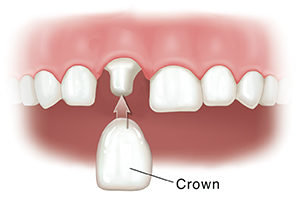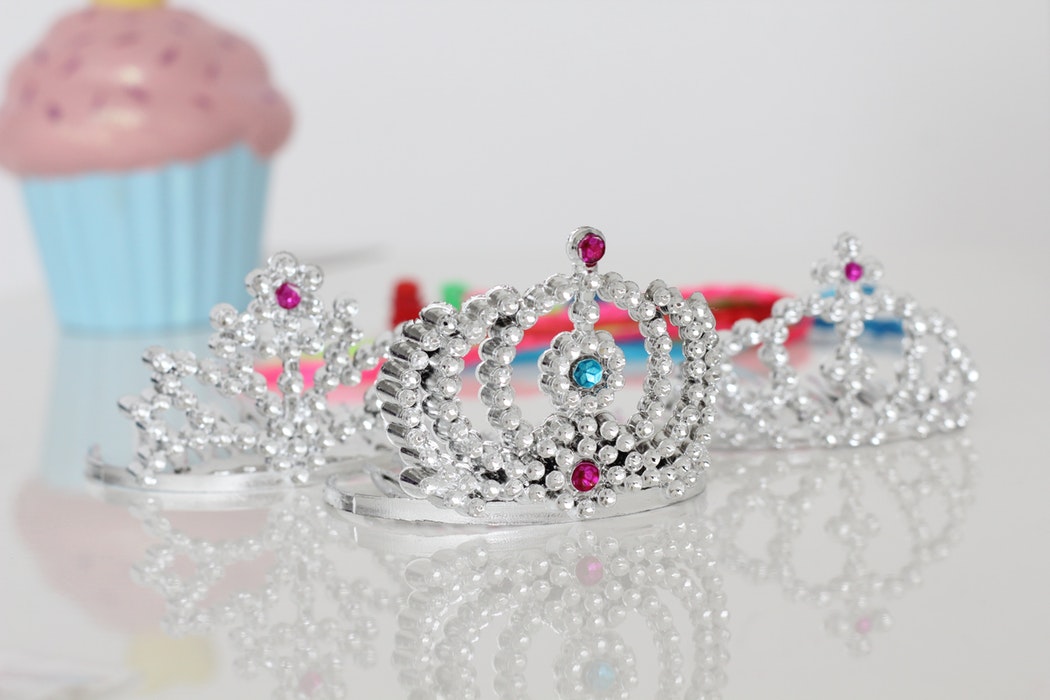At some point a crown (sometimes called a dental cap) may be recommended by your dentist. Whether or not you actually need a crown is a good question to ask. At Smile White Dental we feel that it is important to understand any treatment we may recommend. This is why we take the time necessary to educate you about your teeth and any recommended treatments.
Here are some basic things to understand about crowns.
What is a crown?
A crown is a “cap” that is put over a tooth for any of a number of reasons. It is made of a very hard and durable material – most often of a ceramic called zirconia. The crown is put over the tooth to replace the original structure of the tooth thereby restoring the original tooth’s appearance and strength. In order to make a crown for you, a mold of your mouth must be made to ensure that the crown will function just as your original tooth.

Why do I need a crown?
There are a few different situations which may indicate that you need a crown:
- When a tooth has become so broken down that there is not enough of the tooth left to hold a filling it requires a crown. When a tooth has a very large cavity that needs to be filled, and a filling is attempted, the filling will likely break as there is not enough tooth to maintain the filling. Additionally, if a filling is too large, it can crack the tooth causing further damage.
- A cracked tooth is a serious condition and does usually require a crown in order to protect the tooth from further damage.
- A crown is often recommended after a root canal. This is especially true of your back teeth. Molars and premolars typically need a dental crown after a root canal. This is because you do so much grinding to chew your food that there is a lot more pressure exerted on your back teeth than your front teeth. Also if you tend to grind your teeth you would need a crown to prevent further loss of your original tooth from grinding. It is less common for the front teeth that are generally used for tearing, (canines and incisors) to need a dental crown, though occasionally they do.
What could happen if I don’t get a crown?
- Since your tooth is already worn down it is going to be even more at risk for further damage (such as chipping) and will need more repair or your tooth could crack in which case it will require a crown anyway.
- Your tooth could split. If that happens it would require a crown anyway, or if even more damage is done from the split it could require an extraction.
- Your tooth could suffer more damage and decay requiring a root canal or extraction.
- Leaving a tooth that is worn down or cracked will also affect your bite. This will cause more stress on your existing healthy teeth as well as make it more difficult for you to chew your food.
How is a crown made?
Getting a crown made requires a few steps. The tooth that will be receiving the crown is shaped properly, an impression or mold is made of the inside of your mouth and a temporary crown is put on the tooth. The temporary crown is generally worn for one to two weeks while the mold is sent to a dental laboratory where the actual crown will be fabricated and sent back to your dentist to be properly placed on the tooth being “crowned”.
At Smile White Dental we use new state of the art computer technology in fitting you for your crown with a machine called a CEREC™ machine. Making the crown is also done right in our office! The image of your tooth is done digitally avoiding the hassle of getting a mold done of your tooth. The crown is made using the CEREC machine right in our office and generally only takes a couple of hours! Not only do you avoid waiting for weeks for your crown, it can all be done in one visit!
Here is a short video on YouTube which shows you what the CEREC machine can do:
https://www.youtube.com/watch?v=Cv52OgqVXDY
At Smile White Dental we strive for the best care we can give you. It is important to us that you fully understand the treatment you receive, are satisfied with your care and leave as a happy patient.
Sincerely,
Dr. Ruth Kenworthy, DDS


